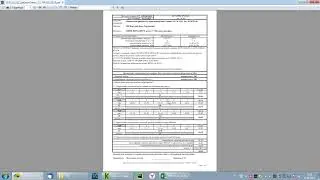Windows Server 2016 Storage Fundamentals | Microsoft on edX | Course About Video
Learn how to implement Microsoft Windows Server basic storage technologies, including disks, volumes, file systems, permissions, sharing and more.
Take this course free on edX: https://www.edx.org/course/windows-se...
ABOUT THIS COURSE
Storage is a key component in deploying Microsoft Windows Server. As users and applications constantly work with and create data, most organizations require a large amount of storage.
In this course, you’ll learn to navigate various tools and techniques such as disks, volumes, file systems, permissions, sharing, administration, and monitoring. Through videos, discussions, hands-on labs, and assessments you will put in place the essential storage requirements for your Windows Server environment.
As a Windows Server System Administrator, you must be able to determine the type of storage your organization needs. You’ll also need the skills required to manage disks, volumes, and file systems. You’ll use the File Server Resource Manager (FSRM) to manage common disk and file management tasks. You’ll secure storage using BitLocker and EFS. You’ll also configure shared storage, such as NFS shares and SMB shares.
Part of the Microsoft Windows Server 2016 Fundamentals XSeries, this course will teach you all of those necessary skills and help you improve your capacity to handle disks and volumes, and secure Windows Server storage. It will also prepare you for Microsoft certification tests and badges – everything you’d need in an introductory job in Windows Server administration.
WHAT YOU'LL LEARN
How to select, install, initialize, and format hardware disks
Management of simple and spanned volumes
How to select and configure file systems, including NTFS permissions
Configuration of File Server Resource Manager quotas, file screens, and storage reports
Encryption of data using Encrypted File System (EFS) and secure volumes with Bitlocker
How to configure shared storage using NFS shares, SMB shares, Folder Redirection, and Work Folders







![[ FREE ]](https://images.mixrolikus.cc/video/QlPtNxxrtB8)























